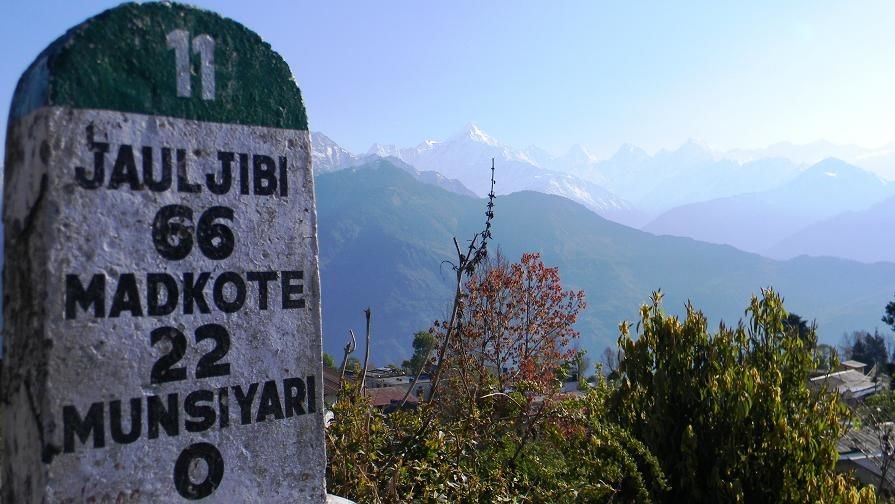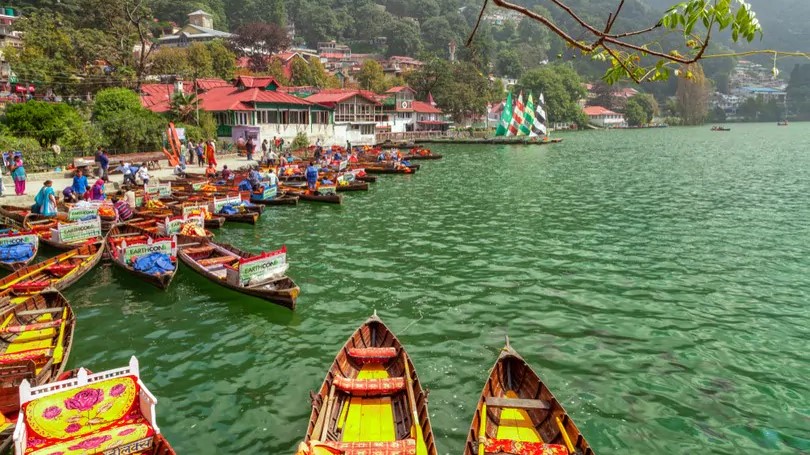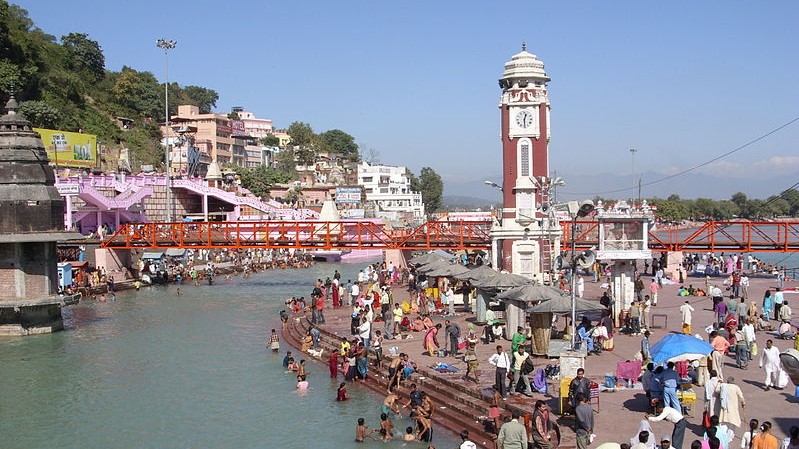Munsyari
Munsyari or Munsiyari is a comely hamlet situated in the Pithoragarh district of Uttarakhand state, nestled in the snow capped peaks of the Himalayas Munsiyari offers splendid vistas of natural beauteousness.
This scenic hill station is perched at an altitude of 2298mts above sea level. Munsyari literally translated means place with snow, and is also referred as Little Kashmir.
Almora
Almora is a municipal board and a cantonment town in the Almora district in the state of Uttarakhand, India. It is the administrative headquarters of Almora district. Almora is located on a ridge at the southern edge of the Kumaon Hills of the Himalaya range, at a distance of 363 km (via NH9) from the national capital New Delhi
Almora was founded in 1568 by King Kalyan Chand, however there are accounts of human settlements in the hills and surrounding region in the Hindu epic Mahabharata (8th and 9th century BCE). Almora was the seat of Chand kings that ruled over the Kumaon Kingdom. It is considered the cultural heart of the Kumaon region of Uttarakhand.
Patal Bhuvaneshwar
Patal Bhuvaneshwar is a limestone cave temple 14 km from Gangolihat in the Pithoragarh district of Uttarakhand state in India. It is located in the village Bhubneshwar. Legend and folklore have it that this cave enshrines Lord Shiva and thirty three koti demigods [33 types of Demigods (12 Adityas, 8 Vasus, 11 Rudras, 1 Indra and 1 Prajapati) in hindu culture]. The cave is 160 m long and 90 feet deep from the point of entrance. Limestone rock formations have created various spectacular stalactite and stalagmite figures of various hues and forms. This cave has a narrow tunnel-like opening which leads to a number of caves. The cave is fully electrically illuminated. Built by the flow of water, Patal Bhuvaneshwar is not just one cave, rather a series of caves within caves.
Kausani
Kausani is located in Bageshwar district of Uttarakhand, India, Kausani is located 52 km (32 mi) north of Almora, a major hill station and the historical capital of Kumaon Kingdom. Kausani lies in the Kumaon division and is situated 123 km (76 mi) North-East of Nainital.
Kausani lies atop a ridge amidst dense pine trees overlooking Someshwar valley on one side and Garur and Katyuri valley on the other on Almora-Bageshwar-Didihat Highway. Kausani is a part of the Lesser Himalayas, a region watered by rivers like Kosi, Gomti and Ramganga. Their banks, known as seras, are highly fertile.
Ranikhet
Nainital
Nainital is a Himalayan resort town in the Kumaon region of India’s Uttarakhand state, at an elevation of roughly 2,000m. Formerly a British hill station, it’s set around Nainital Lake, a popular boating site with Naina Devi Hindu Temple on its north shore. A cable car runs to Snow View observation point (at 2,270m), with vistas over the town and mountains including Nanda Devi, Uttarakhand’s highest peak.
Auli
Auli is a Himalayan ski resort and hill station in the north Indian state of Uttarakhand. It’s surrounded by coniferous and oak forests, plus the Nanda Devi and Nar Parvat mountains. A long cable car links Auli to the town of Joshimath. North of Auli are the colorful Badrinath Temple, a Hindu pilgrimage site, and the Valley of Flowers National Park, with its alpine flora and wildlife like snow leopards and red foxes.
Mussoorie
Mussoorie is a hill station and a municipal board in the Dehradun District of the Indian state of Uttarakhand. It is about 35 kilometres from the state capital of Dehradun and 290 km north of the national capital of New Delhi. The hill station is in the foothills of the Garhwal Himalayan range.
Haridwar
Mussoorie is a hill station and a municipal board in the Dehradun District of the Indian state of Uttarakhand. It is about 35 kilometres from the state capital of Dehradun and 290 km north of the national capital of New Delhi. The hill station is in the foothills of the Garhwal Himalayan range.
Rishikesh
Rishikesh is a city in India’s northern state of Uttarakhand, in the Himalayan foothills beside the Ganges River. The river is considered holy, and the city is renowned as a center for studying yoga and meditation. Temples and ashrams (centers for spiritual studies) line the eastern bank around Swarg Ashram, a traffic-free, alcohol-free and vegetarian enclave upstream from Rishikesh town.
Mukteshwar
Mukteshwar gets its name from a 350-year-old temple of Shiva, known as Mukteshwar Dham, situated atop the highest point in the town, on the veterinary institute’s campus. Close to it lie the overhanging cliffs, locally known as Chauli-ki-Jali, used for rock climbing and rappelling, with an excellent view of the valleys below. The sunrise point is at the government-run PWD guest house. Another tourist attraction is the small Satoli Village, situated just 21 km from Mukteshwar. One can also visit the Indian Veterinary Research Institute (IVRI). Mukteshwar is the abode of a saint — Shri Mukteshwar Maharaj ji — who lived at the Top Cottage Temple where his samadhi is. One of his disciples, Swami Sanshudhanand Ji, now stays there.
Chaukori
Chaukori is a hill station in the Pithoragarh district set among the lofty peaks of the western Himalayan Range in the Kumaon Division of Uttarakhand, India. To its north is Tibet and to its south is Terai. The Mahakali River, running along its eastern boundary, forms the Indo-Nepal international border. This place has become a prominent tourist place and from here a wide and picturesque view of Himalayan range can be viewed. The golden yellow colour of sun rays falling on the Himalayan range in the morning time is really worth seeing.
Bhimtal
Bhimtal is a town and a nagar panchayat in Nainital district in the state of Uttarakhand, India, situated at an altitude of 1370 meters above sea level and is about 22 kilometers from Nainital. The major attraction in Bhimtal is the Bhimtal Lake, which has an island at its centre. Besides tourism, Bhimtal has also now become a mini district headquarters since most of the district administration offices have been shifted to the newly constructed Vikas Bhawan, the building complex for district administrative offices.
Jageshwar
Jageshwar Temples, also referred to as Jageswar Temples or Jageshwar valley temples, are a group of over 100 Hindu temples dated between 7th and 12th century near Almora, in the Himalayan Indian state of Uttarakhand. The valley has a number of temple clusters such as the Dandeshwar and Jageshwar sites. Some locations have attracted construction of new temples through the 20th-century. Together these clusters over the valley consist of over 200 structural temples built from cut stone. Many are small, while a few are substantial.















